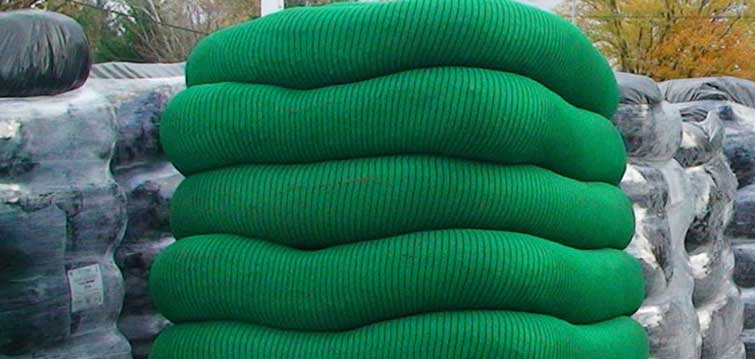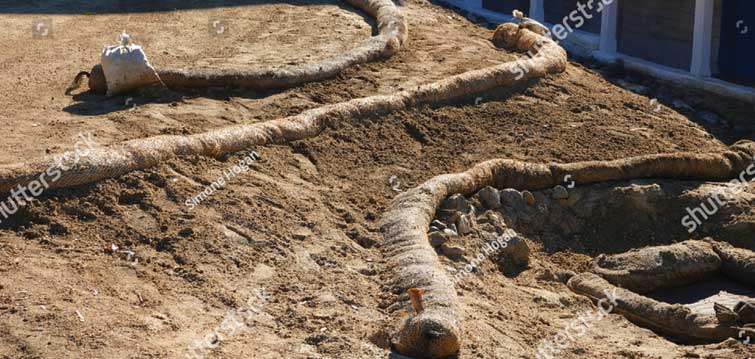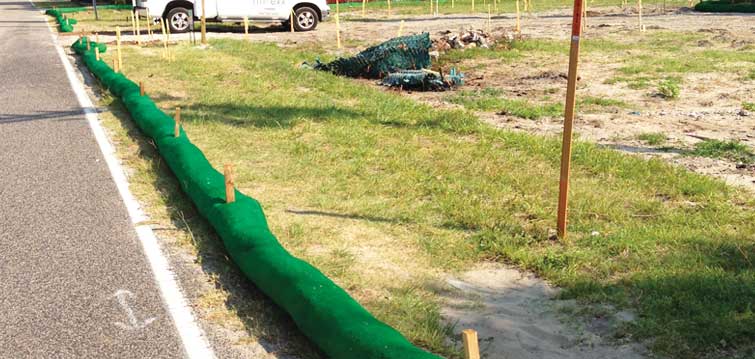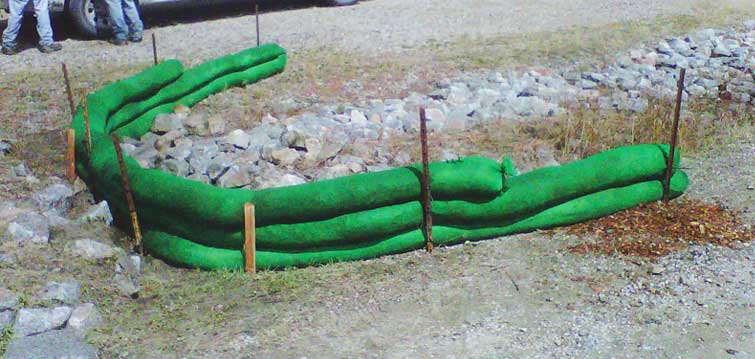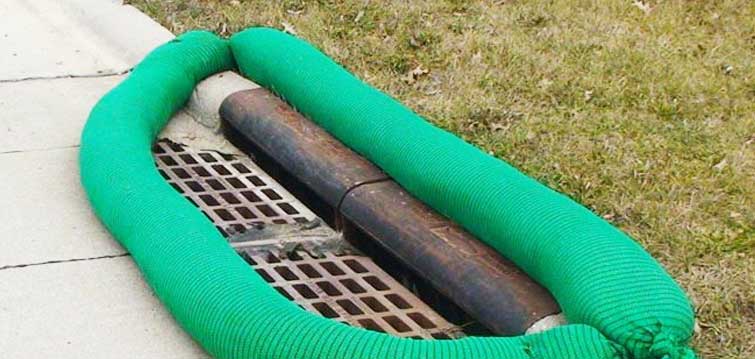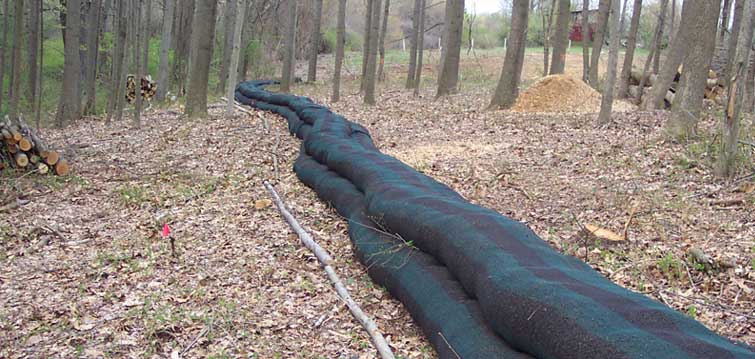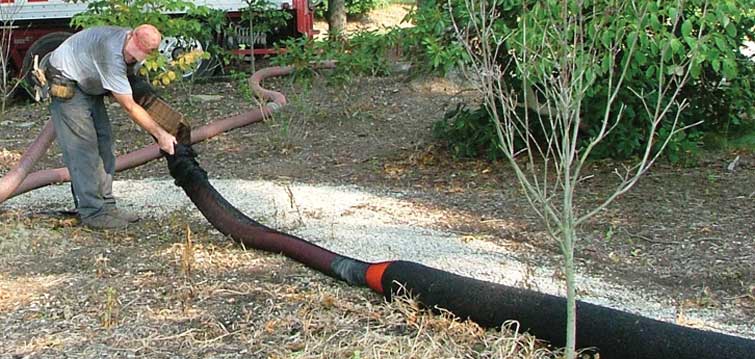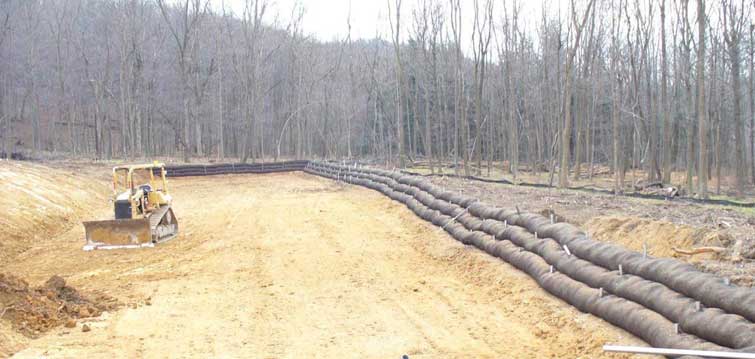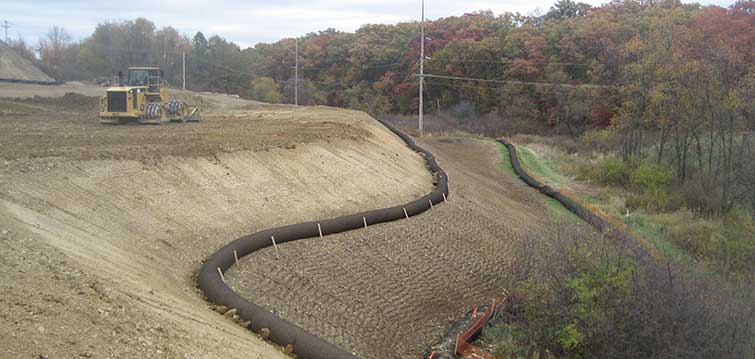Types In Stock:
- Straw — Large Bales
- Straw—Mat Roll 7.5’X120′
- 12″ Filtrexx Silt Sock Pallet 50′
- Seed Aid TM Straw Substitute—50 pound bag
- Penn DOT and DEP Custom Seed Blends Available—Ask for a
Quote Today.
It’s costly and frustrating when mulch that was laid to stabilize a slope starts to erode. This is more likely with mulches of specific sizes and textures. You or your company need erosion control products to prevent this from occurring.
When mulch becomes water-saturated, it could cause a mudslide under certain conditions. At times, mulch can move as a single mass. The steepness of the slope and drainage patterns can increase this risk. This is why you need to engage in some specific erosion control methods.
The wrong mulch can lead to disaster if laid on certain terrain types when a big storm comes. So you need to pick the right type of mulch for the terrain you are working with.
Strong wind can even blow away some mulches if they are light and unstable enough. This could become more of a concern as weather patterns become more unpredictable.
Without erosion control, long sloping hillsides can endanger homes located on the summit as well as the base. Light mulch, manure, and compost need time and proper moisture to settle.
The danger of erosion or mudslides is higher until settling occurs. Netting, jute blankets and other erosion control methods can prevent erosion until that time. These will allow water to seep in gradually, where they help the mulch mesh with the soil.
Fiber Rolls
Fiber rolls are natural erosion-controlling cylinders made of wheat or rice wattle, coconut fiber, flax, straw, or compost. They are also known as straw wattles or fiber logs.
They are laid across the slope and act as a barrier that collects soil, mulch, and compost particles. They biodegrade and become a natural part of of the terrain over time.
Fiber rolls diminish problems with steep or extended slopes when used together with straw, bounded fiber or hydraulic mulch. They channel water while collecting sediment, unlike other erosion-control methods that can cause water to back up and run around the sides of the barrier.
They can be molded to a variety of slope degrees and contours. They blend in well with the terrain and do not obstruct seed applications.
Developers can opt to remove them or leave them in place after plantings establish. As they decompose into mulch, they can offer protection for up to 5 years.
Fiber rolls are useful in professional landscaping and construction sites and along highways, golf courses, ski slopes, reclaimed mines, etc.
They cannot only be used on long or high slopes. You can also lay them along sidewalks, on the sides of bare lots, and as a barrier to keep silt and sediment from running into storm drains.
Fiber rolls last longer when encased in polypropylene netting. They can also be made of completely biodegradable materials such as jute, coir or burlap.
*You should check fiber rolls daily during prolonged periods of rain.
**Costs vary based on diameter, length, and the material.
***Certain slopes can be too rocky or steep to hold mulch, no matter what is placed on top of them.
Filtrexx TM SiltSoxx
At Sugar Hollow Farms landscaping supply, you can find the original, proven and patented Fitrex SiltSoxxTM for erosion control and sustainable management.
The Fitrex SiltSoxx TM filter sock is a superior choice to silt fences and straw wattles. It is a tube-like device made of FilterMediaTM wrapped in Filtrexx MeshTM. They help developers, engineers, and builders achieve best practices in sediment and erosion control, pollutant removal and stormwater management.
Fitrex SiltSoxx TM are used for channeling, filtering and cleaning stormwater in sites prone to runoff. They are often employed in tandem with other control methods.
Fitrex SiltSoxx TM separate accumulated solid matter and remove contaminants. Trenching is not needed. They can be customized to target specific pollutants and can be stacked and molded into a variety of shapes.
Potential applications include concrete washout, check dams, perimeter control, sediment traps, runoff diversion, inlet protection, slope interruption, and filtration.
Check Dams
Check Dams slow stormwater runoff in channels, ditches, and swales. They are effective at protecting at-risk areas by slowing flow velocity. Check Dams also diminish bed erosion and filter out pollutants and sediment.
They are low maintenance, easy to put together, and cost-effective compared to rock dams and silt fences. You can maintain, replace and dispose of them easily. But you can also cover them in vegetation to create a permanent landscape feature.
You can use a variety of mesh and other materials for targeted solutions. For example, some amendments can be added to the sock if the filtration of pollutants is an important goal.
Inlet Protection
Silt socks are great at protecting drain inlets by guiding runoff away from curb inlets and storm drains.
They channel the water behind the inlet protection, where suspended solids deposit. Soluble pollutants get filtered out of the runoff.
There is no need to remove storm grates to install a silt sock as an inlet protection method.
Perimeter Control
Silt socks are effective at perimeter control because they create a barrier that retains sediment. No trenching or soil disturbance is required. They are also easy to maintain or remove.
Using silt socks as a perimeter control method requires careful planning and systemization. The entire site needs to be evaluated to ensure the desired results.
Sugar Hollow Farms carries just about every type of landscaping supply product, including a variety of high-quality silt sock products. Contact us today for more information.
Runoff Diversion
As a runoff diversion method, silt socks are effective at redirecting runoff from flooding-prone sites toward a containment, drainage or treatment area. They can help channel excess water from one site section toward another, where it can be utilized or disposed of. You can even install silt socks on frozen ground.
You can place them on top, below or across slopes to divert and control runoff, decrease slope length, and prevent erosion. They are best used before soil stabilization and the establishment of plants.
Sediment Traps
Silt socks are an effective material for creating sediment traps. Silt socks can form temporary dry detention ponds to trap
sediment and allow suspended solids to settle. No major land disturbance, pond construction or excavation is needed. As sediment traps, silt socks can be custom-designed to fit most kinds of drainage or watershed areas.
Silt socks can also collect sediment from detention pond outfalls. They are used as sediment traps at slope drains, construction site entrances, stormwater diversion structure outlets, etc. They can be retrofitted as stormwater detention systems.
Slope Interruption
As a tool to encourage slope interruption, silt socks can diminish soil erosion by decreasing slope length, which dissipates the energy of sheet flow. Less velocity translates to reduced potential for rill or gully erosion.
They are available in various levels of media, mesh, and tensile durability. These make possible flexible configurations for slope- interruption. You can use silt socks on slopes with grades of up to 1:1.
They offer a high degree of intimate contact with the soil surface. They can slow runoff, or disseminate concentrated runoff on slopes. They are also suitable as a slope interruption method for environmentally-sensitive areas.

